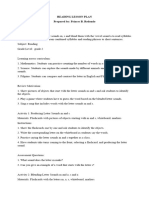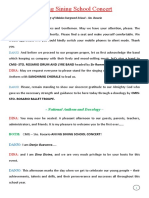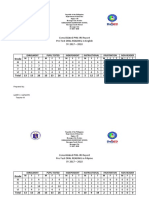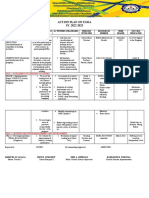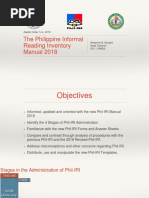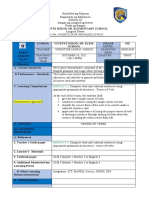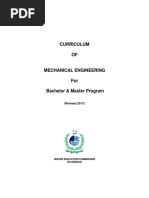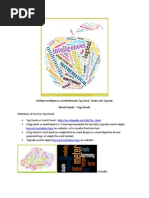0 ratings0% found this document useful (0 votes)
508 viewsHome Connection Action Plan
Home Connection Action Plan
Uploaded by
api-253675831Copyright:
© All Rights Reserved
Available Formats
Download as DOCX, PDF, TXT or read online from Scribd
Home Connection Action Plan
Home Connection Action Plan
Uploaded by
api-2536758310 ratings0% found this document useful (0 votes)
508 views2 pagesOriginal Title
home connection action plan
Copyright
© © All Rights Reserved
Available Formats
DOCX, PDF, TXT or read online from Scribd
Share this document
Did you find this document useful?
Is this content inappropriate?
Copyright:
© All Rights Reserved
Available Formats
Download as DOCX, PDF, TXT or read online from Scribd
Download as docx, pdf, or txt
0 ratings0% found this document useful (0 votes)
508 views2 pagesHome Connection Action Plan
Home Connection Action Plan
Uploaded by
api-253675831Copyright:
© All Rights Reserved
Available Formats
Download as DOCX, PDF, TXT or read online from Scribd
Download as docx, pdf, or txt
You are on page 1of 2
HOME CONNECTION ACTION PLAN
Subject Area: English
Objectives
Name: Yumi
Age: 7 Years 3 Months Develop a sense of community and belonging
to the classroom by incorporating culture
Increase confidence
Develop critical thinking and ability to ask
questions
Develop reading and writing skills
Encourage participation in independent
written work
Motivate to participate in English literacy tasks
Extend speaking and listening skills
Develop a strong home-school connection
Origin: Japan
Siblings: 5 year old sister
Notes: Recently moved to Australia
with her Father, Mother and younger
Sister.
Strategy One Host a Family Talent Cultural Night
Parents, families and their children are encouraged to
come along to see a showcase of the classroom
communitys cultural talents. This could be set up in a
school hall and could include things such as food stalls,
dance and music performances, art installations or
storytelling. Yumis mother is happy to be involved in all
aspects of Yumis language development and could
become involved by helping Yumi cook food, tells
stories, or fold origami.
Pedagogy in Action Objectives Achieved
Hierarchy of Needs third level; belonging. For
both parents and children.
Respect for Diversity
Inclusion motivates English language
development.
Inclusive of cultures in the classroom
Increasing confidence and sense of community
Development of home-school connection
Motivating participation of literacy tasks
Strategy Two Language Back Pack
Stories, games, reading activities and writing activities
are placed in a back pack along with explicit
instructions. Instructions contain both text and visual
cues so parents whom are English Language Learners
can guide their children through the literacy activities.
Activities for Yumi might include simple picture books
Yumi and her mother could narrate in basic English,
books that Yumi and her mother can read in Japanese
then tell a recount in English and literacy games that
play on Yumis interests, strengths and talents such as
origami, music, dance, mathematics and anime.
Pedagogy in Action Objectives Achieved
Games that motivate, increase concentration,
build confidence whilst improving language
skills.
Parents model reading and writing in own
cultural style which is easily understood by
children.
Strategies that incorporate childrens strengths
and interests lead to commitment of
acquisition of new skills and also encourage
participation.
Develop reading and writing skills
Extend speaking and listening skills
Develop critical thinking
Develop a strong home-school connection
Motivating participation of literacy tasks
Strategy Three Picture and flash cards around the house
Teacher can issue Yumis parents with a set of word and
picture cards that can be placed on everyday items
around their home. This could also be done in the form
of a routine or task chart that allows Yumi to be
independent by looking at the chart, analyse what she
has and has not completed and make judgements
about what she should be doing next. Yumis parents
can change the tasks as need be to have exposure to a
variety of different words and phrases.
Pedagogy in Action Objectives Achieved
Opportunities to recognise different words and
to read and write them.
Authentic use of written script.
Develop reading and writing skills
Encourage independence
Develop critical thinking
Strategy Four Peer tutoring
Parents and families can organise for students to be
tutored by children that are more skilled multilingual
speakers. If Yumis parents are involved in the local
Japanese community, they may know of families with
children whom are competent at speaking both English
and Japanese. Play dates or tutoring could be
organised with a competent peer to facilitate Yumis
language development as well as help her to develop
her social interactions.
Pedagogy in Action Objectives Achieved
Communicative competency integration of 4
macro skills sociolinguistic, grammatical,
discourse and strategic competency.
Audio-lingual method, developing speaking and
listening skills is vital first step.
Extend speaking and listening skills
Increasing confidence
Motivate to engage in literacy tasks
Notes:
- Parents to continue to speak their first language at home and continue to develop their first language, as children with good literacy skills in their first language are
more easily able to learn a second language (Ferlazzo & Sypnieski, 2012).
You might also like
- Presentation For ELLN During REadingDocument13 pagesPresentation For ELLN During REadingLoraine Anna100% (3)
- Test 5to Odd. Angliski JazikDocument3 pagesTest 5to Odd. Angliski JazikSirma Stavreska83% (30)
- 1st Course Outline Grade 1 Sy 2019-2020Document2 pages1st Course Outline Grade 1 Sy 2019-2020Marife HerreraNo ratings yet
- Si Chuchay Ang Batang MapagbigayDocument38 pagesSi Chuchay Ang Batang MapagbigayKristabelle BernabeNo ratings yet
- Reading Lesson Plan 1Document3 pagesReading Lesson Plan 1Rosemarie AcapulcoNo ratings yet
- SPEd Concert 2019.scriptDocument7 pagesSPEd Concert 2019.scriptdinaNo ratings yet
- Rnshs Narrative and Pictorial Report - National Reading Month 2018Document10 pagesRnshs Narrative and Pictorial Report - National Reading Month 2018Bright AppleNo ratings yet
- Flat Filipino Narrative Del PilarDocument1 pageFlat Filipino Narrative Del PilarCristita Macaranas VigoNo ratings yet
- Script Emcee For ResearchDocument2 pagesScript Emcee For ResearchFrancis LlagasNo ratings yet
- Narrative Report On Brigada Eskwela Finaldocx PDFDocument8 pagesNarrative Report On Brigada Eskwela Finaldocx PDFJosephine Dequito AlcanzarenNo ratings yet
- Fuller Approach HandoutsDocument9 pagesFuller Approach Handoutsprincipals deskph100% (1)
- Attendance Sheet For School Reading Recovery Program Anchored in CRLADocument7 pagesAttendance Sheet For School Reading Recovery Program Anchored in CRLAJAIRAH BAUSANo ratings yet
- The Domains of Literacy: Emergent Literacy Stage: Felicitas E. Pado, PHDDocument41 pagesThe Domains of Literacy: Emergent Literacy Stage: Felicitas E. Pado, PHDRhea AcupidoNo ratings yet
- Bridging Between LanguagesDocument14 pagesBridging Between Languagestrisha abadNo ratings yet
- Implementation Plan School - B Ased P Roject-Brigada Sa Pagbasa (BP) de Sibugay For SY 2021-2022Document4 pagesImplementation Plan School - B Ased P Roject-Brigada Sa Pagbasa (BP) de Sibugay For SY 2021-2022Myra Shimeath D. LagartoNo ratings yet
- Teachers Role in Promoting Literacy and NumeracyDocument50 pagesTeachers Role in Promoting Literacy and NumeracyKim Alcat100% (1)
- LAC 1 Session GuideDocument1 pageLAC 1 Session GuideCherry CarlosNo ratings yet
- ACR-INSET New TemplateDocument9 pagesACR-INSET New TemplateAnthony PolidoNo ratings yet
- Buboy BottleDocument24 pagesBuboy BottleMacy Carmellie Altamira SalduaNo ratings yet
- Oralinterpretation 130521042842 Phpapp01Document32 pagesOralinterpretation 130521042842 Phpapp01Art Veloso Mangubat100% (2)
- Phil-IRI Consolidated Report Pre-Test 2017Document4 pagesPhil-IRI Consolidated Report Pre-Test 2017larrycapaciteNo ratings yet
- Department of Education: Mid-Year In-Service TrainingDocument7 pagesDepartment of Education: Mid-Year In-Service TrainingVanito SwabeNo ratings yet
- Solsona National High SchoolDocument6 pagesSolsona National High SchoolJemmalyn Devis FontanillaNo ratings yet
- NARRATIVE PEER BUDDY (Narrative Report Example)Document2 pagesNARRATIVE PEER BUDDY (Narrative Report Example)Cathen FontanillaNo ratings yet
- My First Cot GR.3Document4 pagesMy First Cot GR.3Nardita CastroNo ratings yet
- Assignment 4 Worksheet: Questions Yes No NADocument2 pagesAssignment 4 Worksheet: Questions Yes No NAMj Garcia100% (1)
- BEC Lesson Plan in EnglishDocument1 pageBEC Lesson Plan in EnglishArlene CosepNo ratings yet
- Calendar of Activities For Catch-Up Fridays - 4th QuarterDocument2 pagesCalendar of Activities For Catch-Up Fridays - 4th QuarterVicky Bartolay BadilloNo ratings yet
- TATMES Activity Proposal FOR READING MONTH 2023Document8 pagesTATMES Activity Proposal FOR READING MONTH 2023Angelica C BelarminoNo ratings yet
- Script For EmceeDocument4 pagesScript For EmceeLorina GallegoNo ratings yet
- Certificate of Participation: Ivan Joel S.CaniculaDocument1 pageCertificate of Participation: Ivan Joel S.CaniculaRoby SimeonNo ratings yet
- At Family Lesson PlanDocument5 pagesAt Family Lesson PlanMhen Acenas100% (1)
- Election Deso and Staff 2019Document1 pageElection Deso and Staff 2019JoNe Jean100% (1)
- Induction ScriptDocument3 pagesInduction ScriptRosemarie FulgarNo ratings yet
- Action Plan On EgraDocument2 pagesAction Plan On EgraMARICEL Lasaca100% (1)
- Lesson Plan in ReadingDocument2 pagesLesson Plan in Readingjheia_2775% (4)
- Narrative EGRADocument2 pagesNarrative EGRABrenda OrizalNo ratings yet
- English LESSON PLANDocument3 pagesEnglish LESSON PLANJulie Ann R. BangloyNo ratings yet
- M1L3Document17 pagesM1L3Edilyn Garde Taga-oc100% (1)
- Proficiency Test ResultDocument35 pagesProficiency Test Resultdel420No ratings yet
- English Month Celebration 2018Document3 pagesEnglish Month Celebration 2018Charlie Monderondo100% (2)
- Explicit Teaching Lesson Plan in English 2nd QuarterDocument3 pagesExplicit Teaching Lesson Plan in English 2nd QuarterSusie CruzNo ratings yet
- Workshop No. 1 Worksheet With AnswersDocument3 pagesWorkshop No. 1 Worksheet With Answerskathrina100% (1)
- Narrative Report On Learning Learner Centered ClassroomDocument3 pagesNarrative Report On Learning Learner Centered ClassroomTingtingOdlaim100% (1)
- Script Virtual Reading Festival Sy 2020 2021.pieDocument8 pagesScript Virtual Reading Festival Sy 2020 2021.pieRye EnriquezNo ratings yet
- Innovation Project Reads 2022 2023Document3 pagesInnovation Project Reads 2022 2023Mariae Gladys Africa100% (1)
- The Philippine Informal Reading Inventory Manual 2018: Deped Order 14 S. 2018Document36 pagesThe Philippine Informal Reading Inventory Manual 2018: Deped Order 14 S. 2018Ma Rk AntonioNo ratings yet
- COT1 - Verb Tenses - OngcoDocument7 pagesCOT1 - Verb Tenses - OngcoJane ChristineNo ratings yet
- Reflection 2 PDFDocument5 pagesReflection 2 PDFFelix Llamera100% (2)
- L1 Nature of ReadingDocument15 pagesL1 Nature of ReadingTinni Tapawan100% (2)
- Research On The Localized Workbook in ReadingDocument5 pagesResearch On The Localized Workbook in ReadingRodrigo Reyes100% (2)
- Draft Reading Month Activities 2022Document3 pagesDraft Reading Month Activities 2022noelNo ratings yet
- Mtb3 Ilocano Epp4 q3 w5 Cristine S. Supranes Mylyn B. CorpuzDocument20 pagesMtb3 Ilocano Epp4 q3 w5 Cristine S. Supranes Mylyn B. CorpuzJulius Beralde100% (2)
- Capsule Proposal FormDocument7 pagesCapsule Proposal FormBryan Jester100% (2)
- MTB Narrative ReportDocument7 pagesMTB Narrative ReportJanice Dela Cuadra-BandiganNo ratings yet
- 10 Approaches in Teaching Civics, Philippine History & CultureDocument2 pages10 Approaches in Teaching Civics, Philippine History & CultureKISHA MICHA LUMIKIDNo ratings yet
- The Education System in CanadaDocument20 pagesThe Education System in CanadaIkhwan Syafiq100% (1)
- The Impacts of Happy School Movement (Research)Document3 pagesThe Impacts of Happy School Movement (Research)Jonald Domingo MacasioNo ratings yet
- NARRATIVE REPOR-Aecon 2024Document3 pagesNARRATIVE REPOR-Aecon 2024Paciano CansingNo ratings yet
- Multi Grade Daily Lesson LogDocument4 pagesMulti Grade Daily Lesson LogAngelie Lauren100% (1)
- General ObjectivesDocument15 pagesGeneral ObjectivesMRMohanadNo ratings yet
- SoP AzizurDocument2 pagesSoP AzizurMd Emdadul HoqueNo ratings yet
- Quinn TJ, Langhorne P, Stott DJ (2011) - Barthel Index For Stroke Trials: Development, Properties, and Application. Stroke. 42: 1146-1151Document2 pagesQuinn TJ, Langhorne P, Stott DJ (2011) - Barthel Index For Stroke Trials: Development, Properties, and Application. Stroke. 42: 1146-1151Sausan Hana MaharaniNo ratings yet
- Consolidated MarksheetDocument1 pageConsolidated MarksheetABHISHEK RAJBHARNo ratings yet
- Cambridge English Empower B2 Progress Test: Student NameDocument12 pagesCambridge English Empower B2 Progress Test: Student NamekukushkaNo ratings yet
- Resume Shiwen XuDocument1 pageResume Shiwen Xuapi-315074100No ratings yet
- Different Aids For TeachingDocument19 pagesDifferent Aids For TeachingPrecious CabarseNo ratings yet
- Basic Legal Ethics SyllabusDocument2 pagesBasic Legal Ethics SyllabusRonnie Garcia Del RosarioNo ratings yet
- Self Control and Disciplined Behavior ofDocument4 pagesSelf Control and Disciplined Behavior ofEugene AlyzzaNo ratings yet
- Samira Sultana Tinni: Email: Mobile: +8801705762090Document3 pagesSamira Sultana Tinni: Email: Mobile: +8801705762090Samira Sultana TinniNo ratings yet
- Pr1 Thesis 2Document20 pagesPr1 Thesis 2miles farawayNo ratings yet
- Thesis Questionnaire About Job PerformanceDocument8 pagesThesis Questionnaire About Job PerformanceNat Rice100% (2)
- 2.1 Present Continuous: - FormDocument7 pages2.1 Present Continuous: - FormYosthyn Stalyn Lazaro AcuñaNo ratings yet
- Saint Anthony's Academy of GonzagaDocument2 pagesSaint Anthony's Academy of GonzagaFhrancis Dave Suetos DomingoNo ratings yet
- Application Form For Pipe Welding - TotalDocument2 pagesApplication Form For Pipe Welding - TotalKyaka EthanNo ratings yet
- Education Question Paper For H S Final Examination 2022Document8 pagesEducation Question Paper For H S Final Examination 2022DevarajNo ratings yet
- Mechanical EngineeringDocument130 pagesMechanical EngineeringBlue DarkNo ratings yet
- Legal Research and WritingDocument117 pagesLegal Research and WritingSteve JohnNo ratings yet
- RMT FilmTranscript SukeyFilmDocument49 pagesRMT FilmTranscript SukeyFilmapromiseorg.inNo ratings yet
- Learning A New Language EssayDocument3 pagesLearning A New Language Essayezmxjw15No ratings yet
- S T NS T N: Faisalabad Electric Supply Company (FESCO)Document5 pagesS T NS T N: Faisalabad Electric Supply Company (FESCO)Nicholas FosterNo ratings yet
- Caruso, D. R. (2014) - International Negotiation and Emotional Intelligence. Handbook of International NegotiationDocument9 pagesCaruso, D. R. (2014) - International Negotiation and Emotional Intelligence. Handbook of International NegotiationLaura DumenčićNo ratings yet
- Unit 3Document12 pagesUnit 3aman.222797No ratings yet
- Script For VIDEO LECTURE CONJUNCTIONSDocument2 pagesScript For VIDEO LECTURE CONJUNCTIONSJeya NicolNo ratings yet
- RGPV - Smart Card RAHULDocument2 pagesRGPV - Smart Card RAHULg mokalpurNo ratings yet
- Of Science and Technology Foundation Inc. Elpidio M. Gazmen Compound, Gazmen Road Tagum CityDocument11 pagesOf Science and Technology Foundation Inc. Elpidio M. Gazmen Compound, Gazmen Road Tagum CityNakamura Raven MasakiNo ratings yet
- Word CloudsDocument3 pagesWord Cloudsapi-239062048No ratings yet
- The Relationship of Educational Preparation, Autonomy, and Critical Thinking To Nursing Job SatisfactionDocument9 pagesThe Relationship of Educational Preparation, Autonomy, and Critical Thinking To Nursing Job SatisfactionAnonymous koqHHWNo ratings yet
- Steps Plus VI Test U0 ADocument3 pagesSteps Plus VI Test U0 AKasiaNo ratings yet
- Understanding A Brain-Based Approach To Learning and TeachingDocument5 pagesUnderstanding A Brain-Based Approach To Learning and Teachingrajesha_sNo ratings yet




